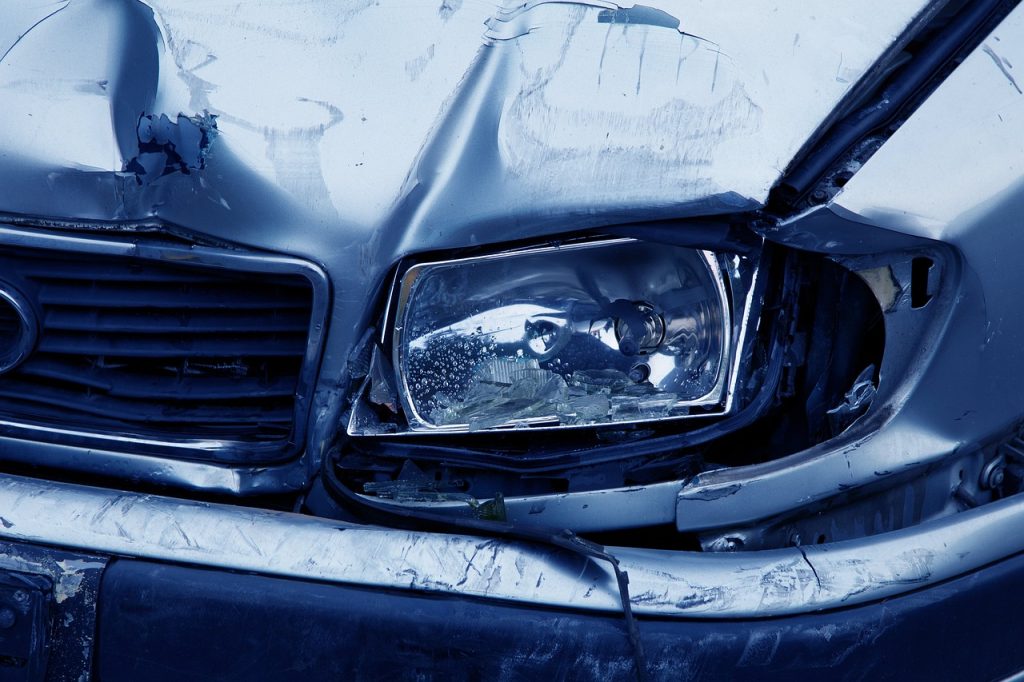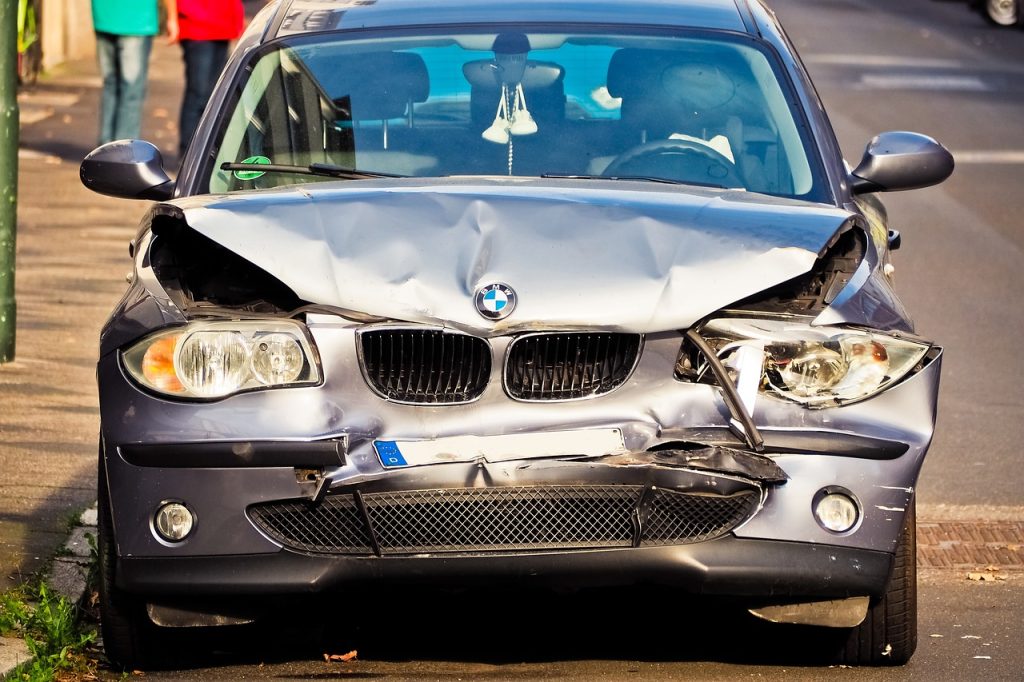Being ejected from the car in an accident greatly increases occupants’ risk of injury and fatality. In fact, about 14 percent of all fatally injured car accident victims are ejected, according to the National Highway Traffic Safety Administration (NHTSA).
The NHTSA investigated fatal car accidents over a five-year period and reviewed information about nearly 400,000 occupants, specifically looking at the causes and factors surrounding occupant ejection in auto accidents. The agency published its findings in a technical report, Factors Related to the Likelihood Of a Passenger Vehicle Occupant Being Ejected in a Fatal Crash. Below, we discuss some of the findings.
Understanding Occupant Ejection Car Accident Cases
Occupant ejection from a vehicle during a car accident is a serious event that often results in catastrophic injuries or fatalities. When occupants are ejected from a vehicle, they are at a much higher risk of sustaining severe injuries due to the lack of protection from the vehicle’s structure. As experienced Olympia Car Occupant Ejection Attorneys, we at Ron Meyers and Associates understand the complexities and challenges involved in these types of accidents.
Free Case Evaluation
Common Causes of Occupant Ejection
Several factors can contribute to the ejection of a vehicle occupant during a car accident. These can include:
- High-Speed Collisions: The force of impact in high-speed accidents can easily cause occupants to be thrown from the vehicle.
- Rollover Accidents: Vehicles that roll over during a crash can cause occupants to be ejected if they are not properly restrained.
- Defective Seat Belts and Airbags: Faulty safety equipment can fail to protect occupants, leading to ejection.
- Improper Use of Seat Belts: Not wearing a seat belt or wearing it improperly can significantly increase the risk of ejection.
- Vehicle Design Flaws: Certain vehicle designs may have structural weaknesses that make occupant ejection more likely during an accident.
- Side-Impact Collisions: T-bone accidents or side-impact collisions can exert forces that cause occupants to be ejected from the vehicle.
- Driver and Passenger Behavior: Actions such as leaning out of the window or not sitting properly in the seat can increase the risk of ejection.
Our team of Occupant Ejection Accident Lawyers in Olympia, WA, is skilled in investigating these causes to determine liability and secure the compensation you deserve.
Risk Factors of Occupant Ejection
There are numerous factors that can contribute to increased risk of occupant ejection in car accidents, the most significant of which is the use of seat belts. Of all the occupants ejected, 86 percent are unrestrained. Below are a few other risk factors the NHTSA highlighted.
- Age of vehicle: Occupants of newer-model cars (post-1998) have less risk of ejection, perhaps because of increased seatbelt usage.
- Speed: The higher the speed at the time of the impact, the greater the risk of ejection. “The percentage of occupants who were ejected was roughly twice as high when the speed limit was 60 mph or higher (18.6%) versus when the speed limit was 40 mph or less (9.6%). When the road had ‘no statutory limit,’ the percentage of occupants who were ejected was highest, at 23.5 percent,” according to the NHTSA.
- Type of vehicle: The danger of being ejected is highest in an SUV (nearly half of all unrestrained victims in an SUV accident were ejected), followed by pickup trucks (38 percent), vans (32 percent) and passenger cars (29 percent)
But aside from reviewing risk factors, victims of car accidents who were ejected from the vehicle should determine the cause of the accident and their ejection if they wish to pursue a claim for damages.
Types of Injuries from Occupant Ejection
Occupants ejected from a vehicle can suffer a wide range of injuries, including:
- Traumatic Brain Injuries (TBI): Severe head injuries can occur from striking the pavement or other objects.
- Spinal Cord Injuries: Ejection can result in damage to the spinal cord, leading to paralysis or other long-term disabilities.
- Broken Bones and Fractures: The impact of being ejected can cause multiple fractures and broken bones.
- Internal Organ Damage: The force of ejection can cause significant damage to internal organs, leading to long-term health issues.
- Internal Bleeding: Ejected occupants are at risk of internal bleeding, which can be life-threatening and require immediate medical intervention.
- Lacerations and Abrasions: High-impact contact with the ground or other objects can cause deep cuts and severe skin injuries.
- Chest Injuries: The chest area is highly vulnerable, with injuries ranging from broken ribs to punctured lungs.
- Pelvic Injuries: The pelvis can be severely injured, leading to long-term mobility issues and chronic pain.
- Facial Injuries: Ejection can result in severe facial injuries, including fractures, dental damage, and disfigurement.
If you or a loved one has suffered these or other injuries, an Olympia Occupant Ejection Injury Lawyer at our firm can provide the necessary legal support to pursue your claim.
Steps to Take After an Occupant Ejection Accident
If you are involved in a car accident that results in occupant ejection, it is crucial to take immediate steps to protect your rights:
- Seek Medical Attention: Your health and safety are the top priority. Obtain medical treatment for any injuries sustained.
- Document the Scene: Take photos and gather information about the accident scene, including witness contact details.
- Contact an Attorney: Reach out to Ejection Injury Attorneys in Olympia, WA, to discuss your case and understand your legal options.
Injured Victims May Be Able to File a Claim for Damages
When negligence is the cause of an occupant ejection accident, the victims (or their family) may be able to sue the responsible party. If the victim survived the crash, he or she can file an injury claim for recovery if a lawyer can prove that another party’s negligence caused or contributed to the accident or the ejection.
A car manufacturer, meanwhile, may be strictly liable if a problem with the vehicle is to blame for the ejection — this means the claimant does not have to establish negligence, only that the defect caused or contributed to the accident and injuries.
If your loved one was killed when he or she was ejected in a car accident, you might be able to file a wrongful death claim to seek compensation for your financial and emotional losses. Contact an attorney to discuss how to go about that legal process.
Preventing Occupant Ejection
Preventing occupant ejection during a car accident involves several proactive measures. As Olympia Car Occupant Ejection Attorneys, we advocate for the following safety practices:
- Always Wear Seat Belts: Proper use of seat belts is the most effective way to prevent ejection during a crash. Ensure all passengers are buckled up correctly.
- Use Child Safety Seats: Children should be secured in appropriate child safety seats that are correctly installed and used according to the manufacturer’s guidelines.
- Maintain Your Vehicle: Regular maintenance checks can ensure that safety equipment such as airbags and seat belts are functioning correctly.
- Follow Traffic Laws: Adhering to speed limits and driving cautiously can reduce the risk of high-speed collisions and rollovers.
- Choose Safe Vehicles: Consider vehicles with high safety ratings and advanced safety features designed to protect occupants in the event of a crash.
By following these steps, drivers and passengers can significantly reduce the risk of being ejected from a vehicle during an accident.
Case Results
$3,000,000
Wrongful deaths of two minor children in highway collision with truck in Thurston County.
$850,000
Hazardous waste truck collision resulting in loss of spleen, gallbladder and liver damage in King County.
$620,000
Two auto collisions resulting in spinal surgery in Thurston County.
Our Approach to Occupant Ejection Car Accident Cases
At Ron Meyers & Associates PLLC, we approach occupant ejection car accident cases with a deep understanding of the physical, emotional, and financial toll these accidents can take on victims and their families. Our comprehensive approach is designed to provide compassionate and effective legal representation to those affected by these devastating incidents.
Prioritizing Your Well-Being
Our primary concern is the well-being of our clients. We recognize that occupant ejection accidents can lead to life-altering injuries and emotional trauma. When you choose our firm, you can expect us to put your needs first. We provide a supportive environment where you can share your story, concerns, and goals. Your voice matters to us, and we strive to ensure you feel heard and valued throughout the legal process.
Legal Expertise and Advocacy
Our attorneys bring extensive experience and legal expertise to occupant ejection car accident cases. We understand the complex laws and regulations surrounding these incidents, allowing us to navigate intricate legal processes effectively. Our goal is to protect your rights and seek justice on your behalf. We advocate fiercely for your interests, ensuring your voice is heard in negotiations or in the courtroom.
Thorough Investigation
We conduct thorough and meticulous investigations into occupant ejection car accident cases. Our legal team collaborates with experts, reviews accident reports, inspects vehicles, and gathers compelling evidence. Our aim is to establish liability and demonstrate how negligence or defects led to the accident and your injuries. We leave no stone unturned in building a strong case for you.
Compassionate Communication
We approach our clients with empathy and understanding, recognizing the emotional challenges that accompany occupant ejection accidents. Our compassionate communication ensures you feel supported and informed throughout the legal process. We are here to answer your questions, address your concerns, and provide guidance every step of the way.
Seeking Accountability
We firmly believe in holding responsible parties accountable for their actions. Whether negligence occurred due to a driver’s actions, vehicle defects, or other factors, we vigorously pursue legal action to secure compensation and justice for our clients. Your well-being and financial recovery are our top priorities.
Comprehensive Compensation
We understand that the consequences of occupant ejection accidents extend beyond medical bills. Our approach includes seeking remedies that address both economic and non-economic damages. This may involve recovering medical expenses, lost wages, emotional suffering, and other noneconomic losses. We strive to ensure you receive fair compensation for the full extent of your losses.
Compensation for Occupant Ejection Injuries
Victims of occupant ejection accidents may be entitled to various forms of compensation, including:
- Medical Expenses: Coverage for current and future medical treatments.
- Lost Wages: Compensation for income lost due to inability to work.
- Pain and Suffering: Damages for physical pain and emotional distress.
A Personal Injury Lawyer in Olympia, WA, from our firm can help you navigate the legal process and fight for the compensation you need to recover and move forward.
Collaborative Decision-Making
Your input is invaluable to us. We involve you in the decision-making process, tailoring our legal strategies to address your unique circumstances and goals. You remain informed and empowered, making informed choices about your case’s direction.
Your Trusted Advocates
When you choose Ron Meyers & Associates PLLC for occupant ejection car accident cases, you’re choosing legal advocates dedicated to making a meaningful difference in your life. We are committed to helping you regain your health, financial stability, and peace of mind.
How Ron Meyers & Associates Can Help with Occupant Ejection Car Accident Cases
Why Choose Ron Meyers and Associates?
As a trusted Olympia Vehicle Occupant Ejection Lawyer, Ron Meyers and Associates have extensive experience handling complex personal injury cases. Our dedicated team works tirelessly to ensure our clients receive the maximum compensation for their injuries. We understand the profound impact that occupant ejection accidents can have on your life and are committed to providing compassionate and effective legal representation.
Act Now – Contact Us Today
When you’re involved in an occupant ejection car accident, time is critical. At Ron Meyers & Associates PLLC, we’re here to provide swift, focused support to help you secure the compensation you need.
- Prompt Legal Action: Delaying legal action can jeopardize your chances of holding the responsible party accountable. Contact us without delay to begin the process.
- Proving Negligence: Our experienced team specializes in occupant ejection car accident cases. Let us help you build a strong case and advocate for your rights.
- Comprehensive Legal Support: We understand the challenges you’re facing. From thorough investigations to vigorous advocacy, we’re here to assist you every step of the way.
- Recover Financially: We’ll work tirelessly to help you recover financial compensation for medical bills, lost wages, and other damages.
- Free Consultation: We offer a free, no-obligation case consultation. Contact us today at 844-920-2438 to start your path to justice and compensation. Don’t wait; secure the compensation and justice you deserve by reaching out to us now.
Contact an Olympia Car Accident Attorney Today
If you or a loved one has been injured in an occupant ejection accident, don’t wait to seek legal assistance. Contact an Olympia Car Accident Attorney at Ron Meyers and Associates today for a free consultation. We are here to help you understand your rights and provide the strong legal representation you need during this challenging time.
Frequently Asked Questions About Occupant Ejection Car Accident Cases
After an occupant ejection car accident, prioritize your safety and seek medical attention if needed. Call the police to report the accident, gather information from witnesses, and take photos if possible. Contact an attorney experienced in occupant ejection cases to discuss your legal options.
To prove negligence, you’ll need to establish that another party’s actions or negligence led to the accident and your ejection. This often involves gathering evidence, witness statements, accident reconstruction, and expert analysis. An experienced attorney can help build a strong case.
In an occupant ejection car accident case, you may be eligible for compensation that includes medical expenses, lost wages, pain and suffering, and other related damages. The specific compensation depends on the details of your case.
Yes, there is a time limit, known as the statute of limitations, for filing a claim after an occupant ejection car accident. In Washington State, the statute of limitations is typically three years from the date of the accident. However, there are exceptions, so it’s important to consult with an attorney promptly.
Yes, if your loved one was fatally ejected in an occupant ejection car accident, you may be able to file a wrongful death claim. This type of claim seeks compensation for funeral expenses, loss of income, emotional suffering, and other losses. Consult with an attorney to discuss your specific situation.
Ron Meyers & Associates PLLC specializes in occupant ejection car accident cases. We offer prompt legal action, expertise in proving negligence, comprehensive legal support, and a strong focus on helping you recover financially. Contact us for a free consultation to discuss your case and explore your legal options.
At Ron Meyers & Associates PLLC, we understand the financial strain that can result from an accident. That’s why we work on a contingency fee basis. You won’t pay any legal fees unless we secure compensation for your case. This way, you can access the legal help you need without upfront costs.















